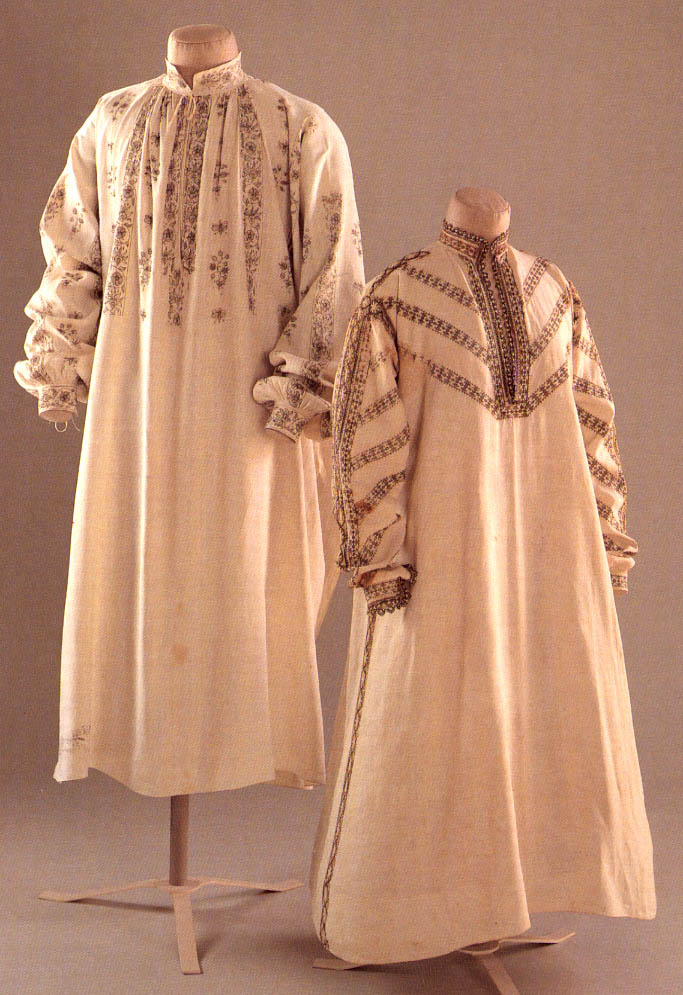Difference between revisions of "Chemise"
| Line 14: | Line 14: | ||
*[http://www.modaruniversity.org/chemise1.htm how to Make a chemise] | *[http://www.modaruniversity.org/chemise1.htm how to Make a chemise] | ||
*[http://www.festiveattyre.com/research/chemise.html How to make a Italian Style Chemise] | *[http://www.festiveattyre.com/research/chemise.html How to make a Italian Style Chemise] | ||
| − | + | *[http://www.pastpatterns.com/707.html Past patterns] | |
[[Category:Garb]] [[Category:How To]] [[Category:Amtgard Things]] | [[Category:Garb]] [[Category:How To]] [[Category:Amtgard Things]] | ||
[[Category:European Garb]] | [[Category:European Garb]] | ||
Revision as of 20:36, 15 January 2009
History of
Women's underdresses begin as loose-fitting shirts or chemises, probably cut simply to a T-tunic shape (i.e., without gussets). In the 12th & 13th c we see the loose, flowing bliauts bound just beneath the breasts with wide belts. The usual interpretation is that this "high-waisting" caused the dress to billow out over the belly, suggesting continual pregnancy and thus fertility. To appreciate this, we must free ourselves from the rather recent notion that "Thin Is In", and remember that the goal of any married couple was to have enough children to overcome infant (and maternal) mortality, with enough progeny to carry out the family chores. Men often remarried multiple times, in an age when divorce was unheard of. However, there may be one more practical reason for high-belting which I have never heard discussed. Underneath that freely-flowing bliaut was loose-fitting chemise, and under that, bare skin. Belting beneath the bosom cinched the breasts in place, providing support in a day when there was nothing yet resembling a brassiere to support the weight.
13th c undersleeves scoop out of the external sleeves to envelope the hands of wealthy women. This serves a double purpose, to emphasize the class distinction from those who labour with their hands, and to protect costly embroidered sleeve cuffs from grease and grime. Clean, bleached linen cuffs could be easily replaced by the wealthy, recycled into lesser uses.
By the 14th c they began wearing an under-cotehardie beneath the visible cotehardie; i.e., an undergarment became more highly fitted so as to not produce unsightly wrinkles in the sexy form of the tight cotehardies. Modern reenactors (of both sexes) can attest to how readily a fitted cotehardie of cotton or linen reveals bulges from underlying modern underwear. "Panty lines" from bulky underclothes which today are mildly unfashionable might have been unthinkably vulgar to a Medieval woman. This garment is not necessarily the innermost layer, by the previous arguments in the Shirt section. Instead, they might have been wearing a shirt of fine cloth, covered by a smoothing under-cotehardie, and finally an outer garment; in the manner of modern panties (for comfort & cleanliness), a slip (for smoothing), and a skirt (for show).
By the end of the 14th c we begin to see evidence of an underdress made of fine or sheer cloth peeking out of the bustlines and sleeves. Another glimpse of these delicate underdresses is found in depictions of nursing mothers, as with the Madonna (1453-4) by Jean Fouquet, where the underdress is almost sheer. Pictures of bathhouse attendant women appear in the Wenceslas Bible, made in Bohemia c1390-1400. These women were regarded in their day as being of dubious moral nature, or perhaps outright prostitutes, and are presumed to be dressed in contemporary underclothes.
